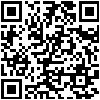外教一對一課程領(lǐng)取私人定制英語學(xué)習(xí)方法
相關(guān)帖子
- ?2025能帶來好運(yùn)的英文微信昵稱(140個(gè)),墻裂馬住!!
- 網(wǎng)上學(xué)英語口語有沒有效果?是怎樣學(xué)習(xí)的?
- 外貿(mào)英語干貨 | 外貿(mào)英語溝通常用句型集錦
- 外貿(mào)英語干貨!外貿(mào)人客戶開發(fā),英語對話范本……
- 【急求!!】英語口語怎么練最有效?有沒有靠譜點(diǎn)的英語口語培訓(xùn)班?
- 【中英對照翻譯】外貿(mào)展會常用的60句英語口語
- ?英語基礎(chǔ)差怎么提高?英語怎么快速提升?有沒有過來人說說看
- 鄭州英語口語一對一有沒有?哪個(gè)口語課程靠譜呢?
- 如何和外國的商業(yè)伙伴在電話中用地道的英語談合作?
- 工作上的英語口語句子!職場中必備的英語口語句子,建議收藏起來!
最新文章
- 【職場英語】郵件寫不好?小心客戶已讀不回!
- 【外貿(mào)老司機(jī)の秘籍】這些商務(wù)英語暗號不懂?客戶分分鐘和你“斷聯(lián)”!
- 【5分鐘搞定】職場人必收的5個(gè)高頻商務(wù)英語表達(dá)!
- 3個(gè)讓外教驚艷的英語表達(dá)技巧,讓你秒變“口語刺客”!(附“社牛”秘籍)
- 這些職場面試經(jīng)典英文回答,獻(xiàn)給畢業(yè)的你!讓畢業(yè)生輕松完勝資深員工!
- ?2025能帶來好運(yùn)的英文微信昵稱(140個(gè)),墻裂馬住!!
- 【急】2025最新線上一對一英語外教哪個(gè)好?一節(jié)課多少錢?
- 【求問】有沒有報(bào)過班的說一下成人學(xué)習(xí)英語選擇哪個(gè)機(jī)構(gòu)?
- 好想找個(gè)靠譜一點(diǎn)的成人英語網(wǎng)課,大家有什么推薦嗎?
- 【在線等!急!】學(xué)好英語口語一定要報(bào)班嗎?英語口語培訓(xùn)班哪家好?
- 成人英語口語要怎么學(xué)? 有什么好方法嗎?
- 成人英語口語怎么學(xué)比較好?怎么學(xué)效果好?
- 成人一對一英語外教課有沒有必要?性價(jià)比高嗎?
- 深圳有沒有適合上班族學(xué)英語口語的機(jī)構(gòu)?有推薦嗎?
- 有沒有靠譜的線上英語外教?有推薦嗎?
披頭士
12018-05-15 16:05:22
Men and women have different approaches to dealing with technology problems, according to a gadget helpline.
據(jù)產(chǎn)品技術(shù)服務(wù)熱線的調(diào)查顯示,男人和女人會用不同的思維方式去解決技術(shù)使用方面的問題。
The service found that 64% of its male callers and 24% of its female callers had not read the instruction manual before ringing up.
該服務(wù)熱線發(fā)現(xiàn),64%的男性和24%的女性咨詢者在打電話前沒有閱讀產(chǎn)品使用手冊。
12% of male and 7% of female customers simply needed to plug in or turn on their appliance.
12%的男性顧客和7%的女性顧客所需解決的問題,其實(shí)只是需要打開電器開關(guān)。
The company, Gadget Helpline, surveyed 75,000 calls received between 25 September and 23 October 2009.
這家產(chǎn)品技術(shù)服務(wù)熱線公司對今年9月25日到10月23日提供的7萬5千份電話咨詢服務(wù)進(jìn)行了統(tǒng)計(jì)。
The helpline has 120,000 subscribers in the UK, most of whom are over the age of35. The average age of helpline staff is 21.
該服務(wù)熱線在英國有12萬位注冊用戶,其中大部分用戶的年齡在35歲以上,而熱線服務(wù)人員的平均年齡則為21歲。
Women spent32% longer on the phone to their helpers than men--but 66% of the helpline staff preferred speaking to them, the survey found.
調(diào)查顯示,女人電話咨詢的時(shí)間要比男人長32%,有66%的熱線服務(wù)人員表示更愿意為男性顧客服務(wù)。
"There is evidence of a gender divide in technology, although a lot of it comes down to interpretation," Joanna Bawa, chartered psychologist, told the BBC.
心理學(xué)家喬安娜·巴娃在接受BBC采訪時(shí)表示,有證據(jù)表明男人和女人在處理技術(shù)問題時(shí)存在差異,盡管很多時(shí)候這些差異歸結(jié)于對技術(shù)的理解存在不同。
In general terms men treat technology as something to be understood and conquered while women are more motivated by appliances that benefit them.
男人傾向于對技術(shù)的理解和應(yīng)用,而女人則更注重如何從該產(chǎn)品中受益。
The helpline's busiest times are Monday mornings and Boxing day, said founder and chief executive Crispin Thomas.
據(jù)這條幫助熱線的創(chuàng)建者和負(fù)責(zé)人克里斯賓·托馬斯說,他們最繁忙的時(shí)候是周一早上和圣誕節(jié)的次日。
Getting gadgets to communicate with each other was the subject of a large number of requests for help. Newly released products also seem to cause teething problems--many of Mr Thomas' customers had difficulty setting up their Blu-Ray players in 2008 when they first became mass market.
新產(chǎn)品的使用往往會接到大量的求助電話。一些新推出的產(chǎn)品同樣會經(jīng)歷發(fā)布初始的困難時(shí)期。比如2008年藍(lán)光播放器首次大量投放市場的時(shí)候,向托馬斯求助的許多顧客都不知道該如何安裝。
He does not believe that appliances are becoming more complicated, but thinks that they are expected to do a lot more.
托馬斯并沒有覺得設(shè)計(jì)變得更復(fù)雜,只是電器越來越完善的功能讓用戶們感到困難。
"Generally speaking, in a production run, 5% of appliances will contain a manufacturing fault," he added."But 15%--20% get taken back to the shop for return."
托馬斯補(bǔ)充道,一般來講,電器生產(chǎn)過程中只有5%的產(chǎn)品出廠時(shí)有質(zhì)量問題,但現(xiàn)實(shí)中卻有15%到20%的顧客會到商店要求退貨。
贈送福利點(diǎn)擊領(lǐng)取:英語口語水平測試
相關(guān)文章:【少兒線上英語】少兒線上英語哪家好?我來告訴你真實(shí)經(jīng)歷
據(jù)產(chǎn)品技術(shù)服務(wù)熱線的調(diào)查顯示,男人和女人會用不同的思維方式去解決技術(shù)使用方面的問題。
The service found that 64% of its male callers and 24% of its female callers had not read the instruction manual before ringing up.
該服務(wù)熱線發(fā)現(xiàn),64%的男性和24%的女性咨詢者在打電話前沒有閱讀產(chǎn)品使用手冊。
12% of male and 7% of female customers simply needed to plug in or turn on their appliance.
12%的男性顧客和7%的女性顧客所需解決的問題,其實(shí)只是需要打開電器開關(guān)。
The company, Gadget Helpline, surveyed 75,000 calls received between 25 September and 23 October 2009.
這家產(chǎn)品技術(shù)服務(wù)熱線公司對今年9月25日到10月23日提供的7萬5千份電話咨詢服務(wù)進(jìn)行了統(tǒng)計(jì)。
The helpline has 120,000 subscribers in the UK, most of whom are over the age of35. The average age of helpline staff is 21.
該服務(wù)熱線在英國有12萬位注冊用戶,其中大部分用戶的年齡在35歲以上,而熱線服務(wù)人員的平均年齡則為21歲。
Women spent32% longer on the phone to their helpers than men--but 66% of the helpline staff preferred speaking to them, the survey found.
調(diào)查顯示,女人電話咨詢的時(shí)間要比男人長32%,有66%的熱線服務(wù)人員表示更愿意為男性顧客服務(wù)。
"There is evidence of a gender divide in technology, although a lot of it comes down to interpretation," Joanna Bawa, chartered psychologist, told the BBC.
心理學(xué)家喬安娜·巴娃在接受BBC采訪時(shí)表示,有證據(jù)表明男人和女人在處理技術(shù)問題時(shí)存在差異,盡管很多時(shí)候這些差異歸結(jié)于對技術(shù)的理解存在不同。
In general terms men treat technology as something to be understood and conquered while women are more motivated by appliances that benefit them.
男人傾向于對技術(shù)的理解和應(yīng)用,而女人則更注重如何從該產(chǎn)品中受益。
The helpline's busiest times are Monday mornings and Boxing day, said founder and chief executive Crispin Thomas.
據(jù)這條幫助熱線的創(chuàng)建者和負(fù)責(zé)人克里斯賓·托馬斯說,他們最繁忙的時(shí)候是周一早上和圣誕節(jié)的次日。
Getting gadgets to communicate with each other was the subject of a large number of requests for help. Newly released products also seem to cause teething problems--many of Mr Thomas' customers had difficulty setting up their Blu-Ray players in 2008 when they first became mass market.
新產(chǎn)品的使用往往會接到大量的求助電話。一些新推出的產(chǎn)品同樣會經(jīng)歷發(fā)布初始的困難時(shí)期。比如2008年藍(lán)光播放器首次大量投放市場的時(shí)候,向托馬斯求助的許多顧客都不知道該如何安裝。
He does not believe that appliances are becoming more complicated, but thinks that they are expected to do a lot more.
托馬斯并沒有覺得設(shè)計(jì)變得更復(fù)雜,只是電器越來越完善的功能讓用戶們感到困難。
"Generally speaking, in a production run, 5% of appliances will contain a manufacturing fault," he added."But 15%--20% get taken back to the shop for return."
托馬斯補(bǔ)充道,一般來講,電器生產(chǎn)過程中只有5%的產(chǎn)品出廠時(shí)有質(zhì)量問題,但現(xiàn)實(shí)中卻有15%到20%的顧客會到商店要求退貨。
贈送福利點(diǎn)擊領(lǐng)取:英語口語水平測試
相關(guān)文章:【少兒線上英語】少兒線上英語哪家好?我來告訴你真實(shí)經(jīng)歷
NO RESULT

